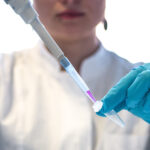
Onychomycosis nail fungus
Onychomycosis is the most common pathology in the nails of both hands and feet
In winter time and in places with tropical and subtropical climates like ours, where people usually visit places such as beaches, rivers and do not dry their feet correctly, an increase in fungal infections has been seen, since the conditions Environmental conditions provide the proper climate for fungal growth. To avoid this problem, it is recommended to keep the moisture in the shoes under control by using talcum powder and drying the feet very well.
Many fungi can cause onychomycosis, including dermatophytes, Candida spp., Aspergillus spp., Fusarium spp., Scopulariopsis brevicaulis, Neoscytalidium spp., Alternaria spp., Curvularia spp., Acremonium spp., Trichosporon canadensis, and Onycola spp. . Tricophyton Rubrum is the most isolated fungal cause in the world, and the main one in Costa Rica.
If you observe alterations such as changes in color, texture and composition, as well as thickening of the nails, it is important to go to the clinical laboratory to carry out the study for fungi.
It is important that before taking the sample, the patient does not apply any type of treatment or powders or creams, home remedies, nail polish or shine for at least 15 days and wash only with soap and water. The nails cannot be very trimmed either. It is recommended not to remove the debris (material under the nails).
At Bioclinic Laboratory, Puerto Viejo we have trained personnel to take the sample correctly. In the fungal study, it includes direct examination and culture to determine the fungus that is causing the Onychomycosis and that it can receive the appropriate treatment to treat this problem.
Dr. Jeffrey Solís Sanabria









